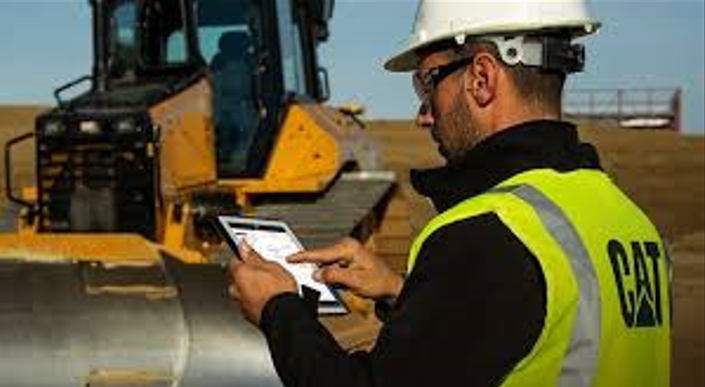Why Location Data Is Key to Saving Fuel and Time
In the fast-paced world of construction, time is money—and so is fuel. Construction companies are constantly searching for ways to...

In the fast-paced world of construction, time is money—and so is fuel. Construction companies are constantly searching for ways to improve efficiency, reduce costs, and keep projects on schedule. One key factor that often gets overlooked is the power of location data. With the help of Construction Equipment Tracking Software, businesses can use location data to optimize their operations, save fuel, and reduce time lost in the process.
In this blog, we’ll explore how location data can be a game-changer for the construction industry and why it’s essential to improving both fuel efficiency and overall productivity.
The Role of Location Data in Equipment Management
Construction equipment tracking software uses GPS technology to provide real-time data on the location, usage, and performance of each machine in your fleet. This data can be used for much more than just knowing where your equipment is at any given time. It provides valuable insights into how equipment is being used, when it’s idling, and whether it’s being moved efficiently across job sites.
Tracking Equipment Movements and Usage
When construction equipment is spread across multiple job sites, it’s easy for machines to get stuck in traffic, wander off-course, or idle unnecessarily. Construction Equipment Tracking Software offers real-time GPS data that tracks the movement of each machine, ensuring it’s being used efficiently. This can help identify patterns of inefficiency, such as extended idle times or frequent unnecessary trips, and allows fleet managers to take corrective actions quickly.
By reducing unnecessary movements and optimizing routes, construction companies can prevent wasted fuel and ensure that equipment is used effectively, directly improving both time and cost efficiency.
Reducing Fuel Consumption with Location-Based Insights
Fuel is one of the largest expenses in construction equipment management. From long idle times to inefficient routes, fuel consumption can quickly add up. However, location data provided by Construction Equipment Tracking Software can offer solutions that reduce fuel costs significantly.
Optimizing Routes for Fuel Efficiency
One of the most direct ways to save fuel is by optimizing the routes that equipment takes between job sites or within the site itself. Construction Equipment Tracking Software allows fleet managers to map out the most efficient routes for machines, avoiding congested areas, reducing travel distances, and minimizing idling times.
With real-time location tracking, managers can dynamically adjust routes based on traffic patterns or job site changes, ensuring that equipment doesn’t waste time or fuel idling in non-productive areas. This can lead to a significant reduction in fuel consumption, sometimes by as much as 15-20%, depending on the scale of the project.
Monitoring Idling Times
Machines that remain idle for long periods contribute to unnecessary fuel consumption. Construction Equipment Tracking Software allows fleet managers to track idle times and make adjustments to ensure that equipment is only running when necessary. By setting alerts for excessive idling, managers can ensure that machines are switched off when not in use, saving fuel and reducing wear and tear on engines.
Many construction sites have downtime during breaks or waiting for material deliveries. With the right tracking system, you can monitor these periods and encourage more proactive practices, reducing unnecessary fuel usage and extending the life of your equipment.
The Efficiency Benefits of Real-Time Location Data
The true power of Construction Equipment Tracking Software lies in its ability to provide real-time data that allows construction managers to make informed decisions about equipment utilization and logistics. With live updates on location and status, fleet managers can instantly assess whether a machine is performing efficiently or if it requires attention.
Improved Scheduling and Job Site Coordination
By knowing exactly where each piece of equipment is located at any given time, managers can more effectively coordinate machine schedules and reduce downtime. For instance, if a machine finishes a task at one job site, the software can immediately direct it to another location where it’s needed most. This ensures that equipment is fully utilized and minimizes waiting times for workers.
Better scheduling also leads to a reduction in fuel consumption. Rather than having machines drive across long distances to reach the next job site, construction companies can optimize the timing and routes, ensuring that every movement counts.
Predictive Maintenance and Fuel Savings
One of the added benefits of Construction Equipment Tracking Software is the ability to predict when machines need maintenance based on their usage patterns. Instead of waiting for a machine to break down, managers can schedule preventive maintenance to ensure that equipment is running at peak efficiency.
Avoiding Overuse and Early Repairs
Location data can also help identify when machines are overused, underutilized, or running inefficiently. By analyzing the patterns, managers can make decisions to rotate equipment, redistribute loads, or send machines for repairs before costly breakdowns occur. This helps in reducing downtime and ensuring machines are not overworked, which can lead to higher fuel consumption.
Conclusion:
The construction industry is becoming increasingly reliant on technology to drive efficiencies, and Construction Equipment Tracking Software is at the forefront of that transformation. By using location data, construction companies can save fuel, reduce idle time, optimize routes, and improve scheduling—all of which contribute to significant cost savings and enhanced productivity.
Incorporating this technology into your fleet management strategy not only helps you save time and money but also provides a smarter, more efficient way to run your operations. Embracing location data is not just about tracking where your machines are—it’s about using that data to make your fleet more efficient, extend the life of your equipment, and improve the bottom line.
If you haven’t yet adopted Construction Equipment Tracking Software, now is the time to start. By utilizing location data, you’ll keep your projects on track while saving valuable resources and reducing costs.



